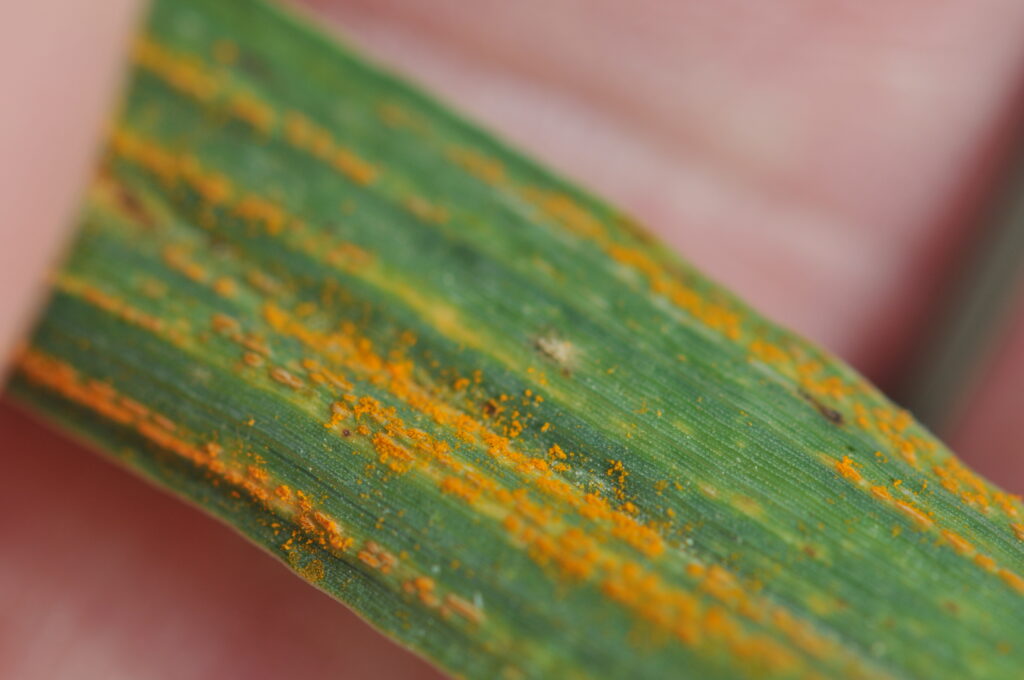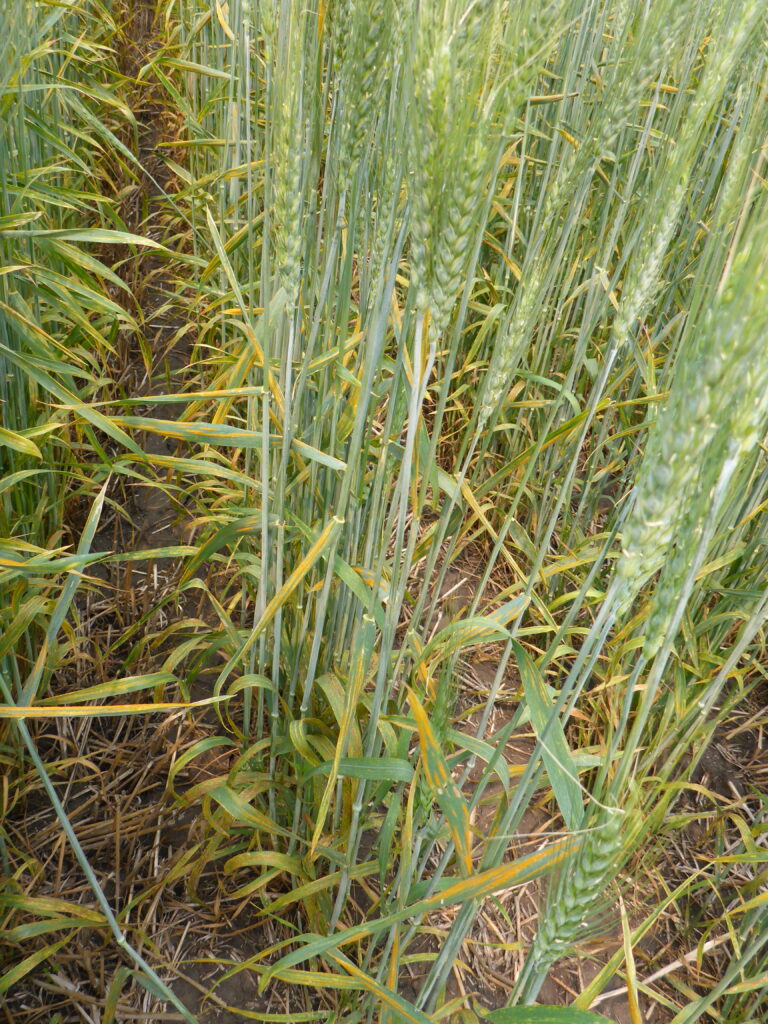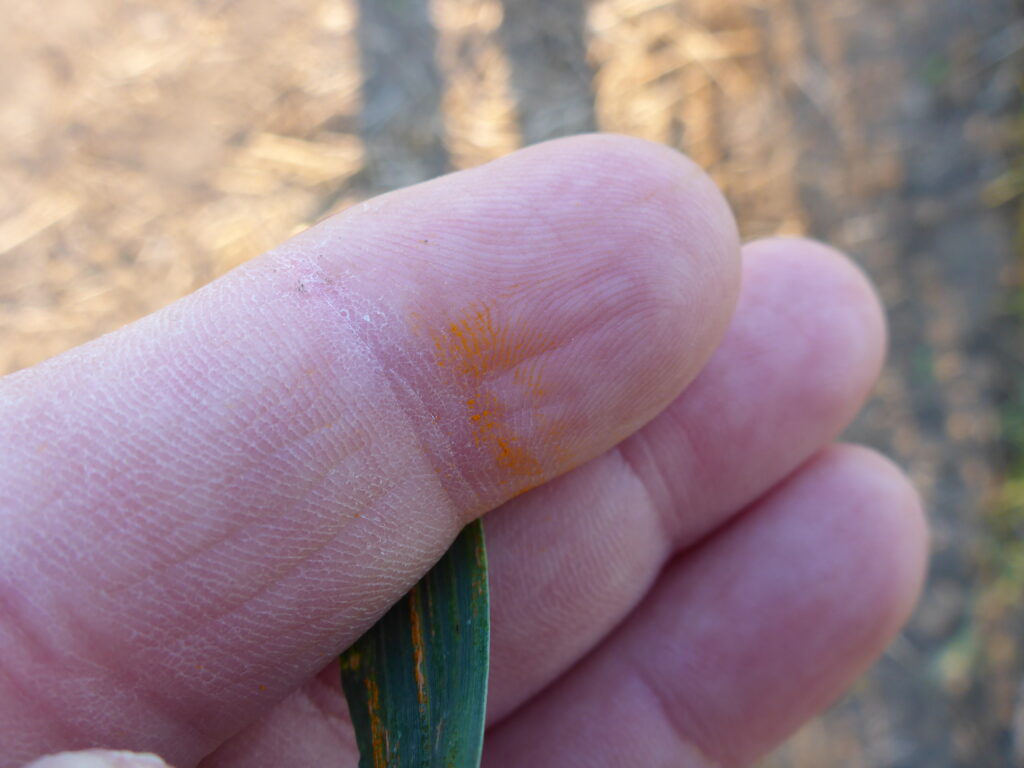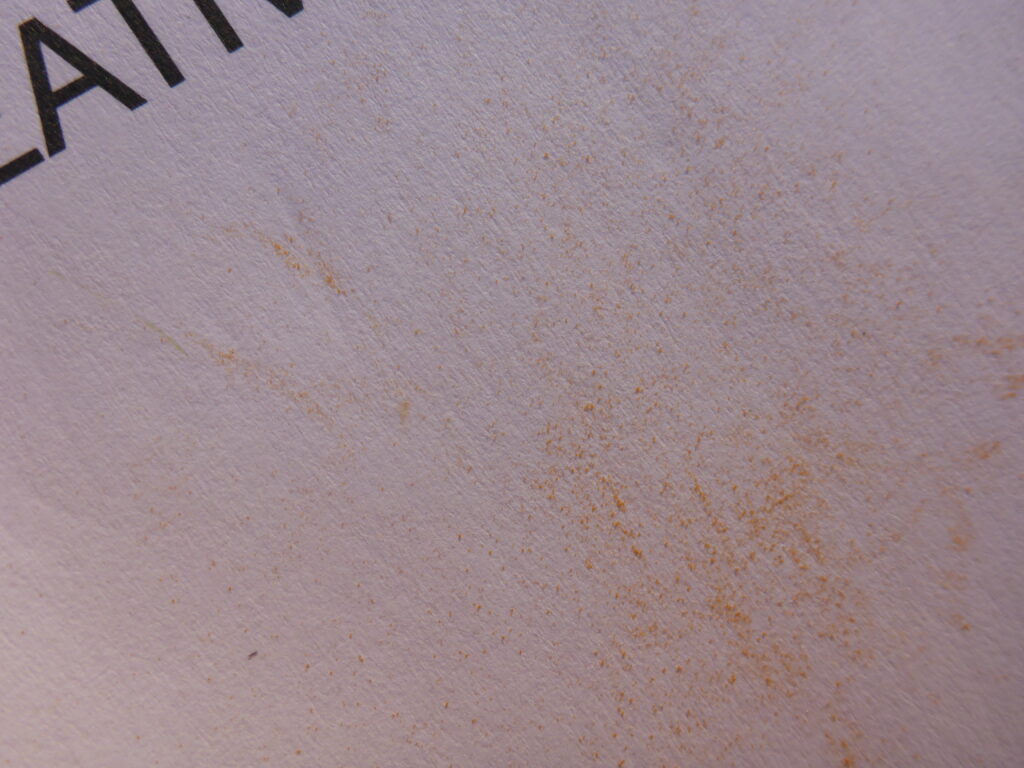Although we are currently working on the next weekly PCDMN cereal rust risk report, a recent stripe rust update (June 20th) from Drs. L. Hebb and U. McKelvy, Montana State University (MSU) has potential implications for Prairie wheat (spring and winter) producers (Cereal Disease Laboratory, Reports on the current cereal rust situation in the U.S., Dr. Uta McKelvy, Stripe rust update from Montana, June 24, 2025).
- Drs. Hebb and McKelvy, MSU, reported on the recent observation of stripe rust in research trial plots at multiple Montana locations
- Symptoms were found on susceptible varieties in test plots in southwestern Montana near Bozeman (Gallatin County), and at the Kalispel Northwestern Agricultural Research Centre (Flathead County). Levels at the Gallatin County trial were generally low to moderate depending on the variety/line, while trace levels were observed at the Kalispel trial site
- There was an additional report of trace levels at another research farm (A.H. Post Farm) near Bozeman in southwestern Montana
- No symptoms of stripe rust have been observed on winter wheat in trials at Moccasin (central MT), Sidney (eastern MT), Huntley (southern MT).
- What does this mean for Prairie wheat producers?
- Unfortunately, these observations bring the stripe rust problem much closer to southern Alberta and southern Saskatchewan and could represent a regional source of this disease
- Prairie wheat growers in these areas are encouraged to be on the look out for symptoms of stripe rust, especially in fields planted to susceptible to moderately susceptible varieties. For information on cereal variety reactions to stripe rust, please consult your Provincial variety guides
- The potential appearance of stripe rust in 2025 will likely come at somewhat later growth stages, especially winter wheat. When stripe rust appears later in crop development, especially after head emergence the extent of yield loss is reduced. Conversely, when stripe rust appears prior to head emergence the yield losses, especially for susceptible varieties can be significant
- In 2024, we had a late arrival of stripe rust at several Prairie locations and the PCDMN posted an in-season update on rust impact based on crop growth stage and variety resistance level
- It is critical for timely scouting of wheat crops for early signs of stripe rust as it can rapidly develop to levels that may be difficult to manage with fungicide
- See photos below for PCDMN examples of typical stripe rust symptoms
- Early signs of stripe rust include narrow yellowish/orange pustules that are typically 1/4 to 1″ (1-3 cm) in length
- More mature pustules can be much longer. The yellowish/orange colouration is due to masses of stripe rust uredospores (asexual spores) erupting through the leaf epidermis from internal hyphae within the leaf tissue
- The masses of spores may have a granular appearance and if you rub your finger along the pustules you will notice a yellowish/orange “dust” on your finger tips (aka Cheezie fingers). This “dust” can also be rubbed off onto white paper. See photos below
- Once stripe rust appears in a Prairie wheat crop, further development is favoured by moist humid conditions and cool to moderate temperatures
- Based on information from Dr. X. Chen, WSU, Pullman, Washington, fungicide application for stripe rust is recommended from the herbicide timing stage through to flowering when the % of plants infected or the area of leaf infection approaches 5%
- Staying on top of an emerging stripe rust problem in your Prairie winter or spring wheat crop is critical as yield losses are greatly increased when the disease becomes established, especially before head emergence
- See photos below for PCDMN examples of typical stripe rust symptoms








